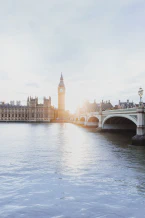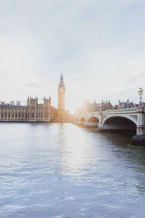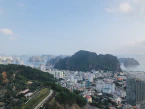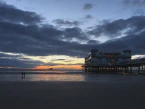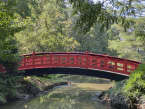Exploring Dark Tourism: From Titanic to Chernobyl

Exploring the Shades of Travel: The Rise of Dark Tourism
Travel, with its invigorating dose of sun-soaked beaches and postcard-perfect landscapes, often seeks to promote joy, relaxation, and escape. However, a burgeoning trend reveals a different, deeper facet of travel. Welcome to the intriguing world of ‘Dark Tourism,’ where travel intertwines with tragic historical significance and emotional resonance, inviting explorers to discover the stories written in the shadows of our past.
The Titanic: A Tragedy Immortalized
Our journey begins with the Titanic, a name forever etched in our collective consciousness, thanks in part to James Cameron’s blockbuster. Still, the glamour of Hollywood often obscures the stark reality of this tragedy. The Titanic, a luxury passenger liner, set sail from England in 1912, destined for New York, only to meet its icy demise in the North Atlantic.
As of 2023, special cruises chart a course to the very spot where the Titanic sank. Tourists with deep pockets can embark on an underwater expedition in deep-sea submarines, brushing up against history as they witness the remnants of the grand staircase, the bridge, the propellers, and even the room where the fateful SOS was sent. Those on a more modest budget can explore any of the 200 museums around the world dedicated to the Titanic, offering a window into this poignant past.
London’s Dark Heart: The Tower of London
London, rich in history and intrigue, has a plethora of destinations for those with a penchant for the macabre. Amidst an array of chilling attractions, the Tower of London stands out, its foreboding presence looming over the bank of the River Thames. Once home to high-profile prisoners like Guy Fawkes and Anne Boleyn, this castle and fortress now houses the Crown Jewels. Still, its thick stone walls reverberate with haunting whispers from a time gone by.
New York’s Toughness: The 9/11 Memorial
From a royal fortress to a city’s enduring testament to toughness, our next stop is the 9/11 Memorial in New York. This hallowed site, which took a decade to complete, honors the victims and survivors of a tragedy that is etched in the world’s memory. The memorial offers a meticulously curated museum and quiet spaces for reflection, where visitors often pose beside the Survivor Tree. This pear tree, once a part of the World Trade Center Plaza, was scorched and damaged, only to be reborn and replanted on the same grounds, a symbol of toughness and rebirth amidst sorrow.
Alcatraz: The Infamous Island Prison
A far cry from New York’s urban landscape, Alcatraz sits in the San Francisco Bay, a formidable monument to America’s penal history. This military garrison turned prison once held infamous criminals like Al Capone and the Anglin Brothers, and its allure has only grown over the years. Now, it ranks as one of San Francisco’s top tourist attractions, its tickets selling out well in advance.
Pompeii: Frozen in Time
Venturing further into the past, we visit Pompeii, a city frozen in time beneath the ash and rock from the catastrophic eruption of Mount Vesuvius in 79 AD. The site offers visitors an unprecedented glimpse into an ancient city preserved almost perfectly, from stunning mosaics and temples to the haunting shells of petrified bodies, making it one of the oldest and most historically significant destinations in the realm of dark tourism.
Hiroshima Peace Memorial Park: A Testament to Hope
Moving on to Asia
, we explore Hiroshima Peace Memorial Park in Japan. Forever associated with the devastating impact of nuclear weaponry, the destruction of Hiroshima and Nagasaki altered not just the trajectory of World War II but also the very nature of warfare. The Hiroshima Peace Memorial Park, part of a complex of memorials across the city, is a beautiful testament to toughness and hope. Located at the epicenter of the blast, it provides a tranquil space for reflection, especially on August 6th, the date of the bombing, when the annual Hiroshima Peace Memorial Ceremony is held.
Chaungak Memorial and Genocide Museum: A Grave Reminder
Our next destination, the Chaungak Memorial and Genocide Museum in Cambodia, is a solemn reminder of the atrocities committed by Pol Pot’s Khmer Rouge regime in the late 1970s. Chaungak was just one of hundreds of ‘killing fields’ where a significant percentage of the country’s population was brutally murdered. Today, it is marked by a Buddhist stupa, a reliquary filled with over 5,000 human skulls. This chilling site stands as a testament to the horrors humans are capable of and underscores the importance of remembering our history to prevent such atrocities from recurring.
Chernobyl: The Ghost Town
Finally, we arrive at Chernobyl, the site of the worst nuclear accident in history. With radiation affecting an area of roughly 1,000 square miles, Chernobyl and the neighboring city of Pripyat will remain uninhabitable for an estimated 20,000 years. Visitors flock to this desolate area to experience a hauntingly preserved snapshot of the Soviet Union, abandoned and overtaken by nature. With the release of HBO’s critically acclaimed drama in 2023, Chernobyl’s visitor numbers have seen an unprecedented surge, making it the epitome of dark tourism.
Exploring these sites imparts not just a unique travel experience but also an intimate understanding of our shared history and humanity. In the interplay of light and dark, the world reveals a deeper narrative that shapes our collective consciousness, urging us to learn from our past and strive towards a more compassionate future.
Conclusion
As our journey through the annals of dark tourism concludes, we are left with an array of emotions. These places of tragedy and turmoil have a profound capacity to humble, educate, and move us. From the chilling depths of the Titanic to the haunting emptiness of Chernobyl, each location offers an intimate encounter with our shared human history, underscoring the preciousness and fragility of life.
Akin to flipping through a book where each page narrates a different chapter of our global narrative, dark tourism sites evoke deep reflections on humanity’s toughness, perseverance, and capacity for renewal in the face of adversity. The Survivor Tree at the 9/11 Memorial, for instance, embodies this spirit of toughness, standing tall as a beacon of hope amidst the memory of devastation.
Yet, these historical imprints also present stark reminders of the darker side of human nature. Locations such as the Chaungak Memorial and Genocide Museum in Cambodia invoke a grave sense of the atrocities that humans can inflict upon each other. They serve as powerful reminders of our collective responsibility to remember, understand, and learn from these dark chapters to avert similar horrors in the future.
Furthermore, the exploration of these places imbues us with a sense of profound respect and empathy for those who have endured these tragedies. The palpable essence of their struggles and toughness can deeply impact the conscientious traveler, adding a whole new dimension to our understanding of history beyond what is offered by textbooks.
However, it’s crucial to approach these sites with the right mindset, bearing in mind the tragic circumstances that led to their significance. The experiences they offer should not be treated as mere spectacles for amusement, but as opportunities for reflection, learning, and personal growth.
In the grand tapestry of our human narrative, dark tourism invites us to pause and ponder upon the shadows, encouraging us to appreciate the spectrum of experiences that define us as a species. As we explore these shades, we not only deepen our understanding of the world around us but also shape a more empathetic and compassionate view of our shared history. This unique genre of tourism not only broadens our horizons but also invites us to reflect on our shared humanity and consider the lessons we can draw from history to foster a more peaceful and inclusive future. It is indeed a poignant reminder that our shared journey as a species is defined not just by the light that guides us, but also by the darkness from which we emerge.
1. What is dark tourism?
Dark tourism is a type of tourism that involves visiting sites associated with death, tragedy, or disaster. It could range from exploring historically significant locations, such as former battlefields, to sites of natural or human-made disasters. The focus of dark tourism is to provide insights into the darker chapters of human history, prompting reflection, understanding, and empathy.
2. Is it ethical to participate in dark tourism?
The ethics of dark tourism is a complex and debated issue. On one hand, it provides an important opportunity to remember and reflect on historical tragedies, ensuring they remain a part of our collective memory. On the other hand, it’s crucial to approach these experiences with respect and sensitivity, being mindful not to treat these places of suffering and loss as mere tourist attractions. When approached thoughtfully, dark tourism can be a profound learning experience.
3. What are some examples of dark tourism sites?
Examples of dark tourism sites span the globe and cover a broad spectrum of history. This includes the haunting ruins of Pompeii, the Hiroshima Peace Memorial Park, the chilling Genocide Museum in Cambodia, and the tragic site of the Chernobyl nuclear disaster. These sites, among others, offer deep insights into the tragedies and triumphs of our shared human history.
4. Why do people engage in dark tourism?
People engage in dark tourism for a variety of reasons. Some are drawn by historical or cultural interest, while others seek to pay their respects or to learn from past events. Dark tourism can offer a more profound, personal connection to significant historical events, beyond what can be found in textbooks. It can also prompt important conversations about humanity, toughness, and the lessons we can learn from history.
5. How can I participate in dark tourism respectfully?
Respectful participation in dark tourism involves approaching these sites with an understanding of their historical significance and a willingness to learn from them. This includes being sensitive to the tragic events that occurred there, refraining from inappropriate behavior, and taking the time to reflect on the human experiences these sites represent. By treating these locations with the dignity they deserve, visitors can contribute to preserving these important parts of our shared history.

